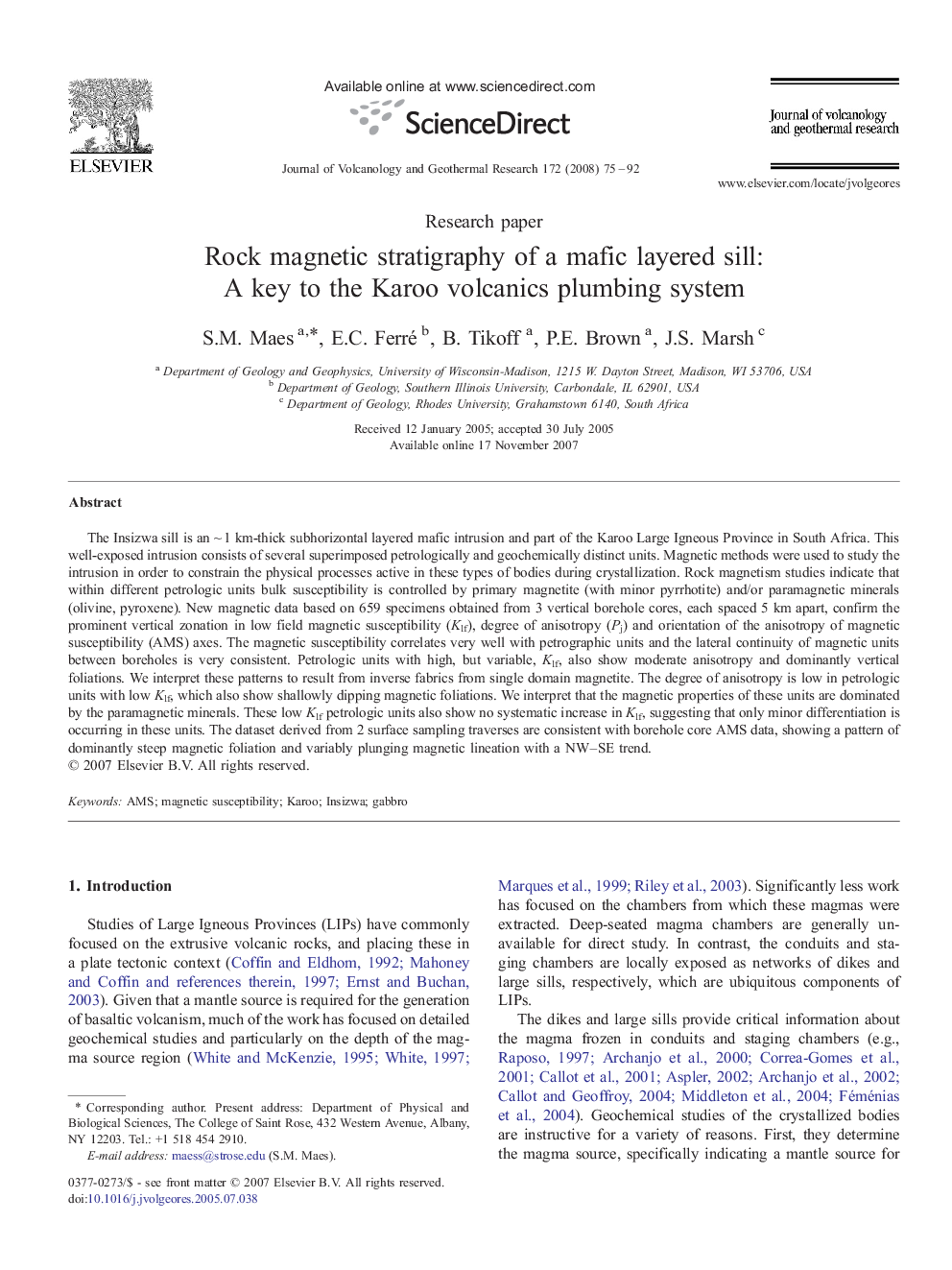| کد مقاله | کد نشریه | سال انتشار | مقاله انگلیسی | نسخه تمام متن |
|---|---|---|---|---|
| 4714794 | 1638450 | 2008 | 18 صفحه PDF | دانلود رایگان |

The Insizwa sill is an ~ 1 km-thick subhorizontal layered mafic intrusion and part of the Karoo Large Igneous Province in South Africa. This well-exposed intrusion consists of several superimposed petrologically and geochemically distinct units. Magnetic methods were used to study the intrusion in order to constrain the physical processes active in these types of bodies during crystallization. Rock magnetism studies indicate that within different petrologic units bulk susceptibility is controlled by primary magnetite (with minor pyrrhotite) and/or paramagnetic minerals (olivine, pyroxene). New magnetic data based on 659 specimens obtained from 3 vertical borehole cores, each spaced 5 km apart, confirm the prominent vertical zonation in low field magnetic susceptibility (Klf), degree of anisotropy (Pj) and orientation of the anisotropy of magnetic susceptibility (AMS) axes. The magnetic susceptibility correlates very well with petrographic units and the lateral continuity of magnetic units between boreholes is very consistent. Petrologic units with high, but variable, Klf, also show moderate anisotropy and dominantly vertical foliations. We interpret these patterns to result from inverse fabrics from single domain magnetite. The degree of anisotropy is low in petrologic units with low Klf, which also show shallowly dipping magnetic foliations. We interpret that the magnetic properties of these units are dominated by the paramagnetic minerals. These low Klf petrologic units also show no systematic increase in Klf, suggesting that only minor differentiation is occurring in these units. The dataset derived from 2 surface sampling traverses are consistent with borehole core AMS data, showing a pattern of dominantly steep magnetic foliation and variably plunging magnetic lineation with a NW–SE trend.
Journal: Journal of Volcanology and Geothermal Research - Volume 172, Issues 1–2, 10 May 2008, Pages 75–92